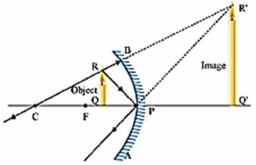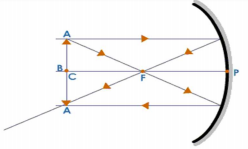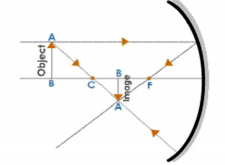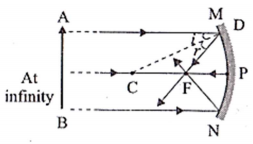NCERT Solution: Light Reflection and Refraction
Power of a lens is reciprocal to its focal length. So, smaller focal length means more power. Out of the given lenses, the lens with 20 cm as focal length has more power than the lens with 40 cm as focal length. The lens with higher power should be used to obtain more convergent light.
When two plane mirrors are at right angles to each other, incident ray and
reflected ray will always be parallel to each other, whatever may be the angle
of incidence. Let us use following figure to understand this.
ED and DC are two plane mirrors placed at right angles to each other. An is
incident ray on CD and MN is normal at point of incidence. NQ is reflected ray
from N and is incident
on point Q.
QB is reflected ray and PQ is normal to ED.
∟ ANM =∟ MNQ
(angle i=angle r)
Since corresponding angles are equal
Hence, BQ ‖ AN proved
This means that incident ray and reflected ray will always be parallel;
irrespective of
value of angle of incidence
The following figure shows a ray of light incident obliquely. Every medium has a critical angle. When angle of incidence is more than critical angle, the ray of light comes back in the same medium. This phenomenon is called total internal reflection.




